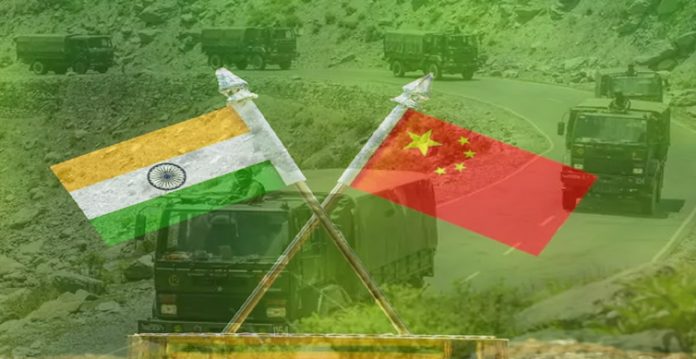China is demanding that India vacates key strategic heights on the south bank of Pangong Lake ahead of conversations on disengagement on the LAC, top Indian Army sources stated.
Throughout the Corps Commander-level talks, China disclosed to India that it won’t discuss disengagement in eastern Ladakh, where the development by the two sides has set off a war-like circumstance throughout the last four months, till the time India vacates the key positions.
Chinese People’s Liberation Army troops are resolute on settling the circumstance first on the south bank where the Indian soldiers are in a position of strength strategically, yet India needs a guide for de-escalation all over the Line of Actual Control (LAC) in east Ladakh to be carried out.
India expressed, during the discussions, that all regions were friction is present, including Depsang, should be talked about for disengagement all along the LAC.
A top Indian Army official stated: Why should discussions be restricted to one or two places when there is a massive build-up all across the LAC.
India has occupied essential mountain heights on the south bank of the Pangong Lake, including Rechin La, Mukpari, and Rezang La that were unmanned until now.
This progression, alongside some other top, holds, permits India to overwhelm the Spangur Gap under Chinese control and furthermore the Moldo garrison on the Chinese side.
This has angered the PLA which has made numerous attempts to dislodge Indian soldiers, prompting instances of warning gunshots being fired.
India had changed the guidelines of engagement after the Galway Valley conflict of June 15 where 20 Indian troops and an unknown number of Chinese fighters were killed.
Chinese had assaulted Indian soldiers with medieval barbaric weapons like iron-studded clubs.
From that point forward, the Indian Army had engaged its officers on the ground to make a decision whether to utilize guns if their soldiers face a life-threatening circumstance and this has been conveyed to China also, sources stated.
The Indian Army has likewise put barbed wire obstacles close to the heights under its influence at the LAC, motioning to the Chinese not to enter its domain.
Three days back, the Indian and Chinese sides, in a joint statement, after the 14-hour-long diplomatic-military conversations in Moldo said that both have consented to actualize the agreement reach by their leader over the border issue.
On 21st September, senior Chinese and Indian commandants held the sixth round of Military Commander-Level Meeting.
The two sides had candid and in-depth exchanges of views on stabilizing the situation along the LAC in the India-China border areas, the Indian Army had expressed.
They added: They agreed to earnestly implement the important consensus reached by the leaders of the two countries, strengthen communication on the ground, avoid misunderstandings and misjudgments, stop sending more troops to the front line, refrain from unilaterally changing the situation on the ground, and avoid taking any actions that may complicate the situation.
The different sides likewise consented to hold the seventh round of the Military Commander-Level Meeting as quickly as time allows, take viable measures to appropriately take care of issues on the ground, and together defend harmony and peace in the border region.
It was for the first time that the Indian appointment had two Lt Generals, two Major Generals and a Joint Secretary from the Ministry of External Affairs (MEA).
Directed by Lt Gen Harinder Singh, Commander of the Leh-based 14 Corps, the Indian appointment likewise had Lt Gen P.G.K. Menon from the Army headquarters in Delhi.
Menon will, in the end, assume control over Commander of the 14 Corps in November.
Navin Srivastava, joint Secretary, East Asia, was there to guarantee that consideration with China happens on an approved five-point roadmap, including immediate disengagement of soldiers, between both the nations.
The nations arrived at the five-point roadmap during the discussions between External Affairs Minister S. Jaishankar and his Chinese counterpart Wang Yi in Moscow on the 10th of September.
India and China are occupied with a four-month-long deadlock at the LAC in Eastern Ladakh. Regardless of a few degrees of dialogue, there has not been any breakthrough and the standoff still continues.
WITH IANS INPUTS







